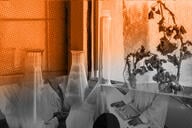You have /5 articles left.
Sign up for a free account or log in.
It’s that time of year again when the boxes of Christmas decorations come out of storage and for a few days our living room and dining room are a chaotic assemblage of boxes until we finish decking the halls. After the kids had done their decorating last night, I carefully unwrapped the layers of bubble wrap that protected my set of vintage glass ornaments. These once brightly colored balls, the type of kitschy holiday decorations that probably cost a dollar at a dime store in the 1950’s, are concave on one side with tiny plastic and wood figures nestled in their glitter-snow centers. I paid only a few dollars for them at an attic sale, but I cherish them for their simple, faded beauty and for the family gatherings of which I imagine they were part.
It’s not unusual for me to get excited over someone else’s discards. When I was in graduate school there were always piles of “free” treasures and junk in the department hallways. One day I found in one of these piles a discarded box of old lantern projector slides. The transparent glass slides, about 3 by 5 inches in size, would have been used to illustrate a research seminar in the late fifties or early sixties, and they contained drawings of lizards as well as diagrams of the mechanical forces produced by sprinting lizards’ legs. Unlike modern transparency slides (now made obsolete by Powerpoint) I could hold them up to the light and easily see what was on them. I was struck by the beauty of the illustrations and saddened that they were in the discard pile because I knew they had belonged to a recently deceased professor emeritus. Although the presentation format was obsolete, this man’s ideas were important in the field of animal locomotion, and I wondered about the excitement he must have felt in preparing the slides to present his work. The glass plates themselves were of no particular value, except that I valued the contribution to science they represented and valued the little bit of time I’d had to get to know the professor. I scooped up the slides, with plans to display them in some way, but almost 15 years later they’re still in their box. I imagine incorporating them into some kind of stained glass window art someday, and working with glass is a new skill set I’ll have to take on. But I just can’t throw out the slides.
Another of my graduate school finds is a steel and glass instrument cabinet that I rescued from my advisor’s office after a big clean-up day. My advisor, who’d had little use for the cabinet except as a catch-all for piles of papers, inherited it after a colleague retired. Its sickly green paint was peeling and it had a few rust spots, but when my husband questioned my judgment for taking it home I argued that it had great potential. The cumbersome structure was a real pain to move and keep all of the glass protected, but it has traveled with us back and forth across the country during our moves. My mother and I together took on the project of refinishing it, and the cabinet has become a treasure. I think about the role it played in the laboratory where a young professor began his scientific career over fifty years ago. The cabinet’s glass shelves probably once held sterilized medical instruments and other lab ware, while bottles of chemicals would have been stored behind the metal door underneath. Now my treasured collection of seedpods, fossils, bones, seashells, and shed reptile skins resides on the glass shelves, and the storage space below makes a nice liquor cabinet (and home for the giant Halloween spider who doesn’t have a good place to go in the off-season).
It really is only stuff after all, and these material things I value are not as important as the memories or legacies they evoke. But I do like having the physical reminders from previous generations. I wonder if any of my discards will be of value to someone else one day. Packrat that I am, though, my family will most likely say, Why did she keep all this junk? They’ll be left to sort through it all and create their own sentimental attachments. And who knows what will inspire future generations -- vintage electronics perhaps?

